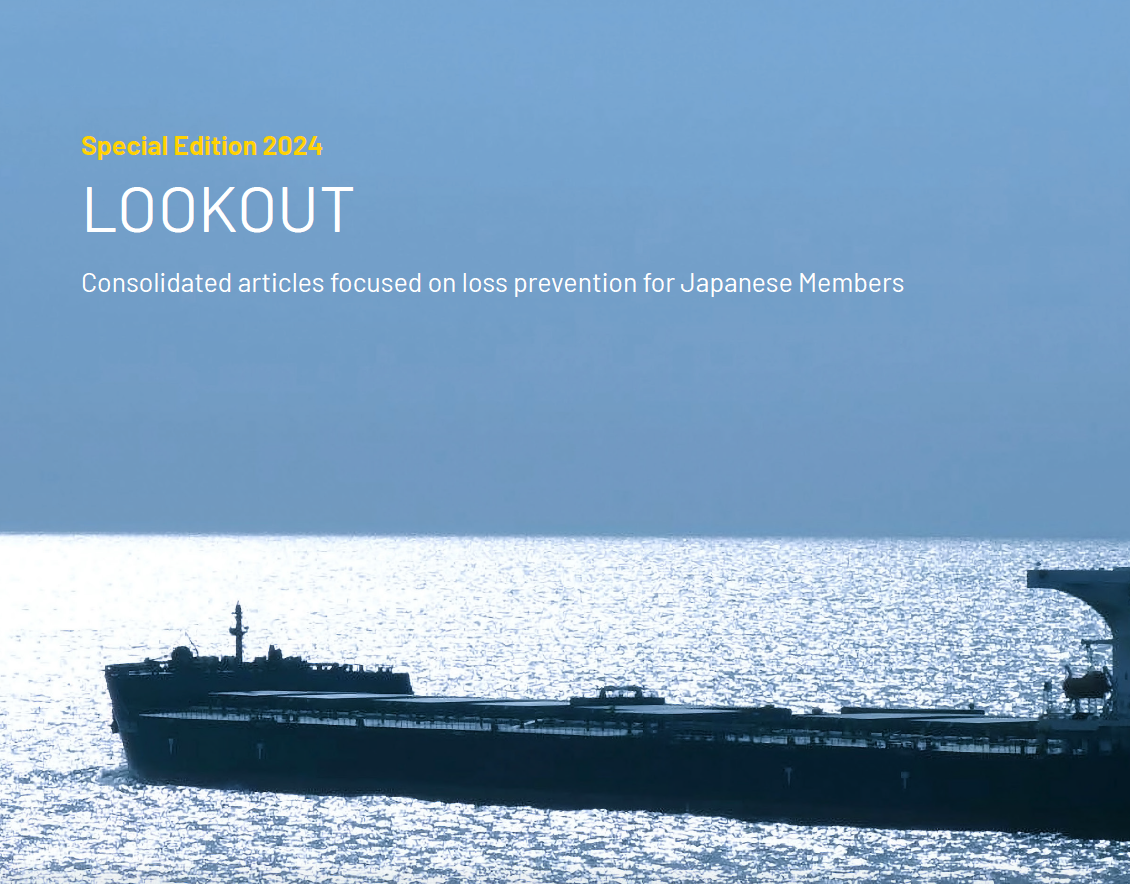In recent years it became common practice to mark snap-back zones on ships decks in the vicinity of mooring machinery, rollers and fairleads. However, industry advice with respect to identifying and marking snap-back zones came under review last year following an incident where a deck officer was seriously injured during a mooring operation when standing in a location that had not been identified as being within a snap-back danger zone.
All mooring ropes will stretch to some degree under tension and more so when constructed from synthetic fibre. When a mooring line parts under load, the sudden release of stored energy in the rope will cause it to recover its original length almost instantaneously. The two ends of the line recoil or snap-back towards or past their secured ends with great velocity and anyone standing within the snap-back zone risks serious injury or death. A snap-back zone is thus an area within which it is unsafe for persons to be positioned when ropes are likely to come under tension.
The direction of travel and area affected by a recoiling rope is in practice difficult to predict and will vary depending on a number of factors, including the particular mooring arrangement and direction of leads employed. Mooring ropes led around roller pedestals and fairleads have the potential to create complex snap-back zones. It has therefore come to be recognised that the painting of permanent snap-back zones on mooring decks is unlikely to be appropriate for all mooring scenarios and may engender complacency in crew members.
Chapter 26 of the United Kingdom Maritime and Coastguard Agency's Code of Safe Working Practices for Merchant Seafarers now provides advice on the matter as follows:
26.3.2 Owing to the design of mooring decks, the entire area should be considered a potential snap-back zone. All crew working on a mooring deck should be made aware of this with clear visible signage. 26.3.3 The painting of snap-back zones on mooring decks should be avoided because they may give a false sense of security.
In effect, the whole mooring deck may be considered a danger zone.
Of course mooring decks are working areas and it is not suggested that they become complete exclusion zones, which would be an absurdity. However, it is recommended that on board risk assessments are conducted to ensure potential snap-back zones are identified, taking into account the various mooring configurations that may be employed. Mooring plans should also illustrate the identified snap-back hazardous zones. Prior to each operation, the mooring teams should carry out a pre-mooring tool box talk to ensure all participating crew members are aware of the hazards of snap-back and probable areas of the mooring deck that are not safe when mooring lines are under load.
The accompanying images provide examples of signage used on board UK Club Members vessels giving warning of entering snap-back hazard zones.
The loss prevention department aims to reduce Members' exposure to claims by raising awareness of risk. Co-ordinated by the Loss Prevention team is a dedicated team of Risk Assessors.
The Risk Assessors supervise and co-ordinate the activities of the five ship inspectors and control the condition surveys which are carried out (by independent surveyors) under the Club's Rules. The Risk Assessors travel worldwide in order to carry out their tasks. Permanent bases are maintained in Rotterdam, Greece and Singapore. All the Ship Inspectors are qualified QA Lead Assessors and are familiar with the requirements of the ISM Code. For more information on our Loss prevention team please contact: lossprevention.ukclub@thomasmiller.com




